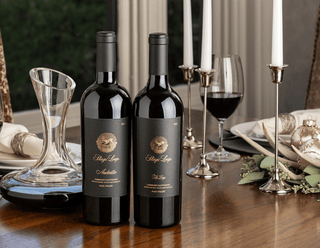Fermentation
Every bottle of wine owes its complex flavors and characteristics to a fascinating process called fermentation. This crucial stage in the winemaking process transforms humble grape juice into the wine that ends up in your glass. Here’s how the magic happens.

The Transformation Begins
The fermenting process commences shortly after harvest. The freshly picked grapes are crushed and their juices released. Natural yeasts present on the grape skins or added yeast strains initiate the fermentation process by converting the sugars in the juice into alcohol and carbon dioxide.
The Role of Yeast
Yeast, a microscopic organism, plays a starring role in the winemaking process. As fermentation progresses, yeast cells consume the sugars naturally present in the juice and multiply, generating heat and carbon dioxide as byproducts. This conversion of sugar into alcohol is a delicate dance that winemakers carefully monitor, as it significantly impacts the wine's flavor profile and body.
Temperature and Timing
Controlling the temperature of the wine during fermentation is essential to preserve its flavors and desired characteristics. A cooler temperature slows down fermentation, preserving delicate aromas and flavors, while warmer temperatures accelerate the process, resulting in bolder, fruit-forward wines. The duration of fermentation can range from a few days to several weeks, depending on the wine's style and the grape varietal.
Extracting Colors and Tannins
During fermentation, red wines gain their deep hues and tannins from the grape skins. As the grape skins interact with the fermenting juice, they release pigments and tannins, imparting complexity, structure, and color to the wine. For white wines, fermentation typically occurs without the grape skins, preserving the lighter, more delicate hues.
The Art of Punch-Downs and Pump-Overs
To ensure maximum extraction of flavors and colors in red wines, winemakers perform punch-downs or pump-overs during fermentation. This process involves mixing the grape skins and juice to allow better contact and transfer of essential components. It's a labor-intensive yet rewarding practice that influences the wine's overall quality.
Monitoring and Timing
Throughout fermentation, winemakers continuously taste and monitor the juice to determine when to halt the process. The decision to stop fermentation depends on factors such as sugar levels, acidity and the winemaker's vision for the final wine. Halting fermentation at the right moment ensures the desired balance between sweetness and acidity.



